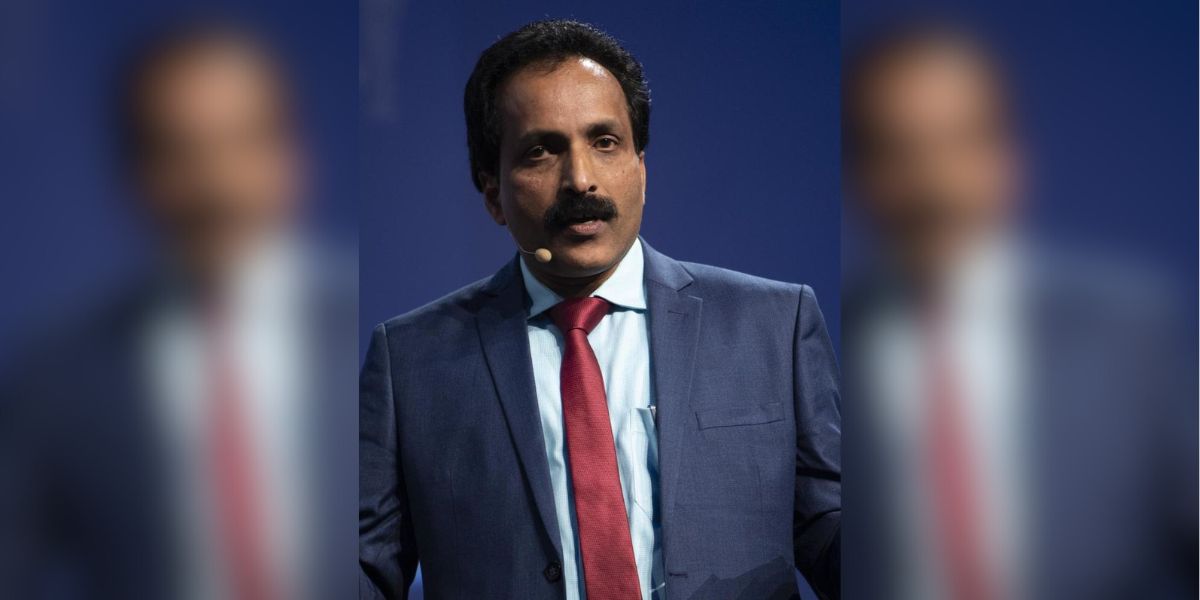He also said the team was waiting for more images of the Moon in the coming days and as of now they were concentrating on scientific studies.
Published Aug 27, 2023 | 1:29 PM ⚊ Updated Aug 27, 2023 | 1:47 PM

ISRO chief S Somnath.
ISRO Chairman S Somanath has said that India was capable of launching more interplanetary missions and the objective of the space agency was the overall progress of the country through the expansion of the space sector.
“Prime Minister Narendra Modi has a long-term vision for the country’s space sector and the Indian Space Research Organisation (ISRO) is all ready to implement it,” he told reporters at Thiruvananthapuram International Airport on the night of Saturday, 26 August.
Somnath reached the Kerala capital for the first time after the historic success of the Moon mission.
Earlier on Saturday, Prime Minister Narendra Modi flew down to Bengaluru directly from Greece, to pay tribute to the ISRO scientists.
“As far as we are concerned, not just the soft landing, but the entire aspects of the Chandrayaan-3 were 100 per cent successful. The entire country is proud of it and extending support to us,” Modi said.
An elated Somnath said he and his colleagues were happy and proud to be part of the great achievement of the ISRO and requested people to continue their support in their future endeavours.
“We are capable of travelling more to the Moon, Mars or Venus…But, we have to enhance our confidence for that…besides that, there should be more investment as well,” he said.
Our space sector should be expanded further contributing to the country’s overall progress, and that is the objective of ISRO, he said.
Asked about Aditya-L1, the first space-based Indian observatory to study the sun, Somnath said the satellite was ready and reached Sriharikota.
The launch is expected in the first week of September and the final date would be announced in two days, he said.
“After the launch, it will take 125 days from the earth to reach Lagrange point 1 (L1). We have to wait till then,” Somnath said.
Aditya-L1 spacecraft is designed to provide remote observations of the solar corona and in situ observations of the solar wind at L1 (Sun-Earth Lagrangian point), which is about 1.5 million km from the Earth.
The mission would carry seven payloads to observe the photosphere, chromosphere and the outermost layers of the Sun, the corona, in different wavebands.
He further said that both the rover and the lander of the Chandrayaan-3 have taken pictures.
The chairman said the ISRO team was waiting for more quality images in the coming days and as of now they were concentrating more on scientific studies and research about the Moon.
India on Wednesday scripted history as ISRO’s ambitious third Moon mission Chandrayaan-3’s Lander Module (LM) touched down on the lunar surface, making it only the fourth country to accomplish the feat, and the first to reach the uncharted south pole of Earth’s only natural satellite.
Modi on Saturday announced the decision to name the spot where the Chandrayaan-3 Vikram lander made a soft landing as “Shiv Shakti Point” and the site where the Chandrayaan-2 lander crash-landed on the Moon’s surface in 2019 would be known as “Tiranga Point”.
Also, August 23, the day the Chandrayaan-3 lander touched down on the lunar surface, would be celebrated as National Space Day’, Modi said.
This achievement made India the fourth country in the world — following the erstwhile Soviet Union, the US, and China — to successfully achieve a gentle landing on the Moon and also the first to make a successful landing at the south pole of the Moon.
(With PTI inputs)
